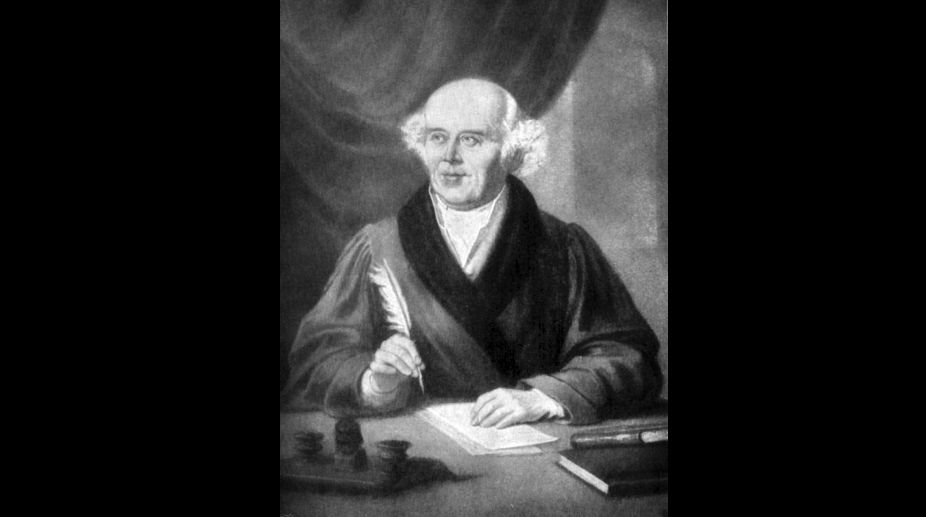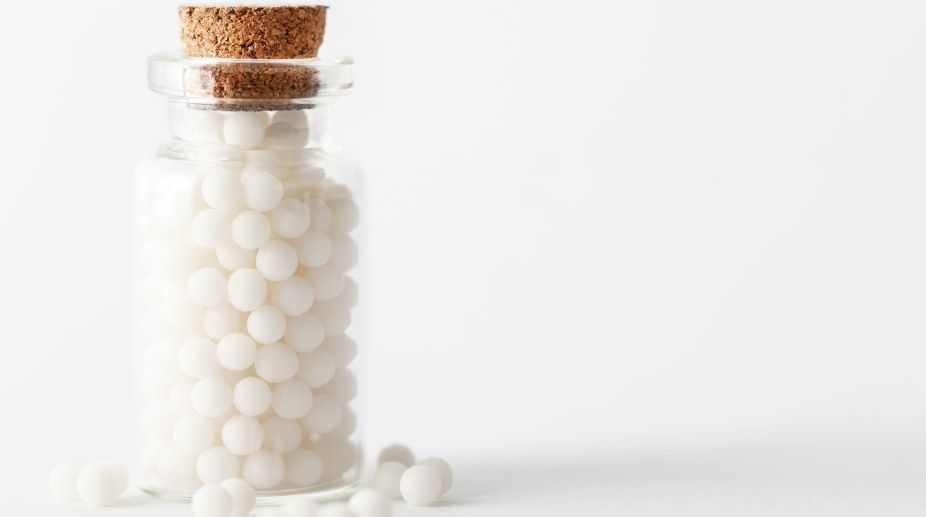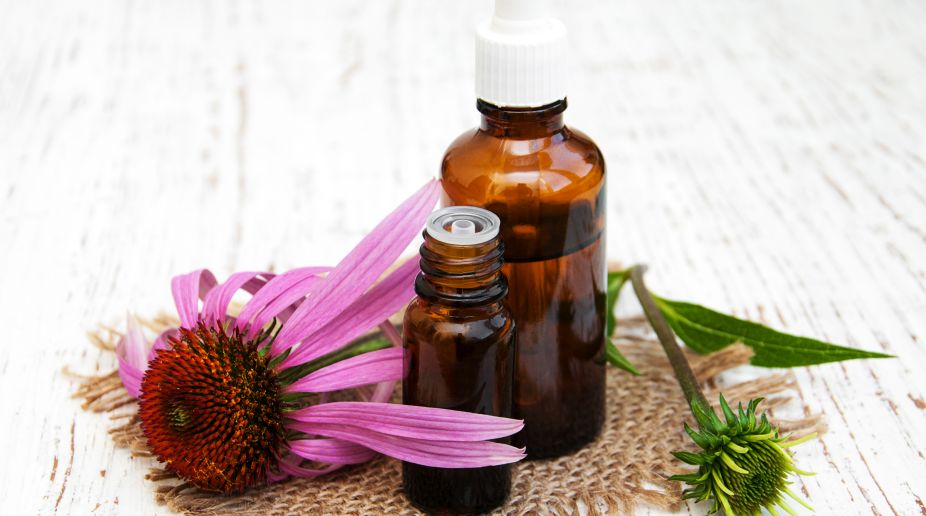BIS establishes department for standardisation of Ayush sector
The Bureau of Indian Standards (BIS), the national standards body, established a dedicated department for the standardisation of Ayush sector.
10 April is observed as World Homoeopathy Day. Dr Christian Friedrich Samuel Hahnemann, the founder of homoeopathy, was born on this day in 1755.

(Photo: Wikimedia Commons)
The pain was unbearable. It had been difficult sitting through the last period in school. I cried out loud, clutching my stomach. It must have been a bug. Half an hour later, I was home lying on the bed, my grandmother sitting next to me. She had given me five small white pills taken from a transparent mini glass jar, followed by some water to gulp down that tasted like spirit. The combination worked and I was soon playing hide-and-seek with my younger sister. Though I had tasted those ‘magic pills’ earlier too, this was the first time I believed they were more than candies that I could snack on behind the elders’ back. Like my family, I too started believing in homoeopathy.
Today is 10 April — the World Homoeopathy Day. The founder of homoeopathy, Dr Christian Friedrich Samuel Hahnemann, was born on this day over two and a half centuries ago — on 10 April, 1755.
Advertisement
The dispensary run by my great-grandfather, who practised homoeopathy in the small Bihar (now Jharkhand) town of Jhumri Telaiya, had a photo of Dr Hahnemann hanging on one of its walls. People from far-off villages in the area would come to him for treatment. My father remembers how sick patients would be brought in “dolis” (makeshift palanquins), and how many of them would happily walk back home.
Advertisement
At my home, my 5-year-old brother would “prescribe” ‘Aconite 30’ if he saw anyone suffering from cold, and we knew ‘Lycopodium’ was the go-to drug in case of minor digestion issues. ‘Arnica 30’ was a must if we had a fall — and ‘Arnica 200’ if the pain was more intense. And what if you ate fish with its bones and a stubborn one got stuck in your throat? We would try Silicea. And it worked every time.

Living in a family of homoeopathy admirers, I grew up hearing stories about homoeopathy and Dr Hahnemann, mostly from my father who would assist his grandfather in the dispensary in his free time.
Hahnemann was the first to propagate homoeopathy in the world. He came up with his theory of “similia similibus curantur”, which essentially meant if a substance caused some symptoms in an otherwise healthy body, the same substance would cure such symptoms in a diseased person. Dr Hahnemann first tried it with cinchona, a Peruvian bark. Legend has it that he observed this bark caused malaria-like symptoms if consumed by a healthy person — and this same cinchona cured a malaria patient if taken in homoeopathic doses.
Dr B K Sarkar, a renowned teacher in Homoeopathic Philosophy at the Calcutta Homoeopathic Medical College, had famously said cinchona was to Dr Hahnemann what falling apple was to Newton and swinging lamp was to Galileo.
Homoeopathy, however, has always been in controversy with people doubting its efficacy and its theory.
Hahnemann faced a lot of criticism and obstacles, but his theory found a lot of takers at the same time and his followers kept growing, so much so that a statue of him was erected in Washington DC.
Gradually, it spread throughout Europe, America and Asia.
According to historians, homeopathy entered India through Dr John Martin Honigberger, a Romanian national who came to Lahore in the early 19th and joined Maharaja Ranjit Singh’s service as the keeper of his royal stable. It is said Dr Honigberger’s proficiency in homoeopathy cured Maharaja’s paralysis of vocal chord, and also his favourite horse’s ulcerated leg. Dr Honigberger went to Kolkata after Ranjit Singh’s death and practised homeopathy there till 1860. He became famous for treating cholera patients there.
He had a contemporary in British doctor Samuel Brookling who also used to give homoeo medicines to people in Tanjore and Madras.

First known Indian homoeopath was Dr Mahendra Lal Sarkar, the second MD to graduate from Calcutta University. He was also the founder of The Indian Association for the Cultivation of Science, a premier science institute. He apparently took to homoeopathy at the insistence of a friend, though the exact time of this switchover is not known.
Sarkar is known to have treated Bankim Chandra Chattopadhyay, and also Ramkrishna Paramhans when the latter developed throat cancer. Old-timers say Sarkar never charged any fee from Ramkrishna Paramhans. He also treated Ishwar Chandra Vidyasagar’s asthma and reportedly cured him.
Later, Dr Pratap Chandra Majumdar, who too was an LMS doctor, emerged as one of the most famous homeopaths. Licentiate in Medicine and Surgery or LMS was a medical degree of historical importance in British India. Not many know, the learned member of Bramho Samaj had delivered an excellent lecture on India at Parliament of the World’s Religions in Chicago in 1893 — the same summit where Swami Vivekananda delivered his historic speech on India and Hinduism.
In due course of time, homoeopathy gained momentum in India and elsewhere, though not without constant controversy. Modern system of treatment always questioned the very basic theory of it, and also the existence of medicine in the potencised preparation of homoeo drugs. They just treat it as placebo effect.
Homoeopathy sustained a big blow in 2017 when the British government stopped funding for homoeo prescriptions in its National Health Service.
The Australian National Health and Medical Research Council has declared it a pseudo science.
In spite of all the obstacles, however, homeopathy has flourished. It is still gaining ground in India — and to some extent in European countries too.
India has firmly supported this system of medicine. More than 12,000 homeo doctors are adding annually to the existing over 2 lakh registered practitioners. It is perhaps the low cost of the medicines that has made it popular here, apart from its visible efficacy.
A lot of common people would have their own homoeopathy stories. I will sign off with a personal experience that my father often recounts.
My grandmother had developed fibroid tumor. All leading gynaecologists she went to in Kolkata had declared surgery was the only way out. A family friend took her to a leading homoeopath in the city. Soon, the tumor got flushed out of her system along with urine. She was fully cured.
Call it a science or ‘pseudo science’, homoeopathy is here to stay, provided it succeeds in warding off the threat from within — the unregistered homoeopaths.
Advertisement